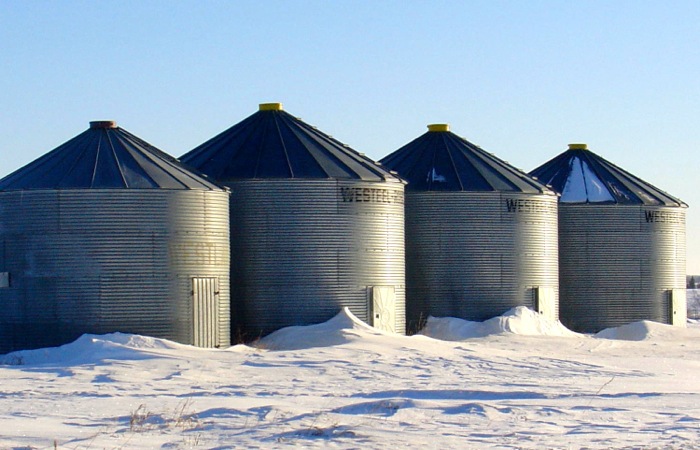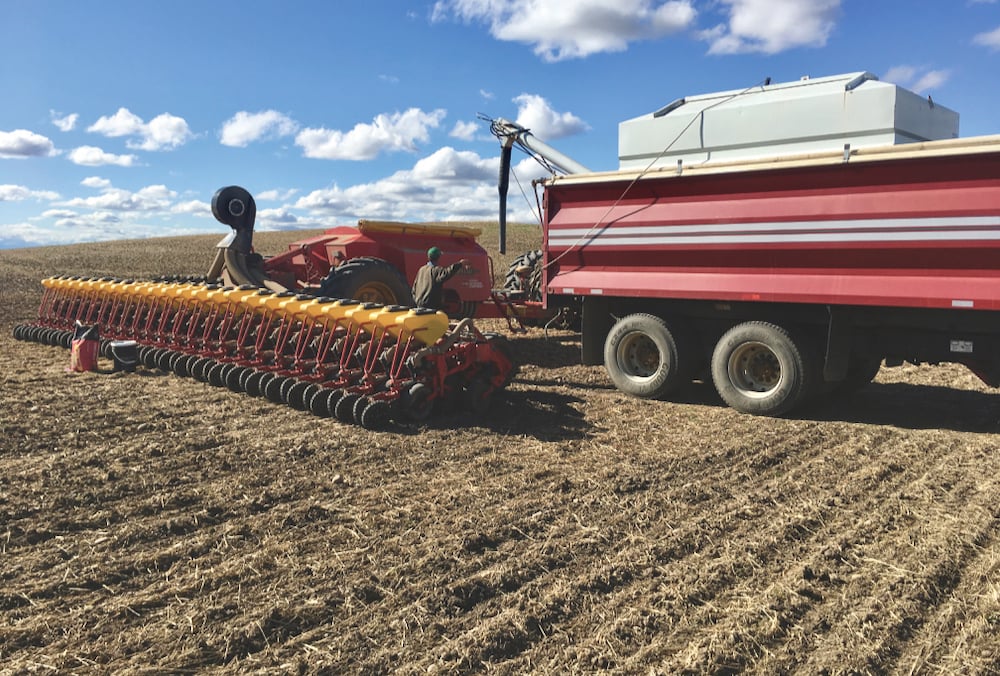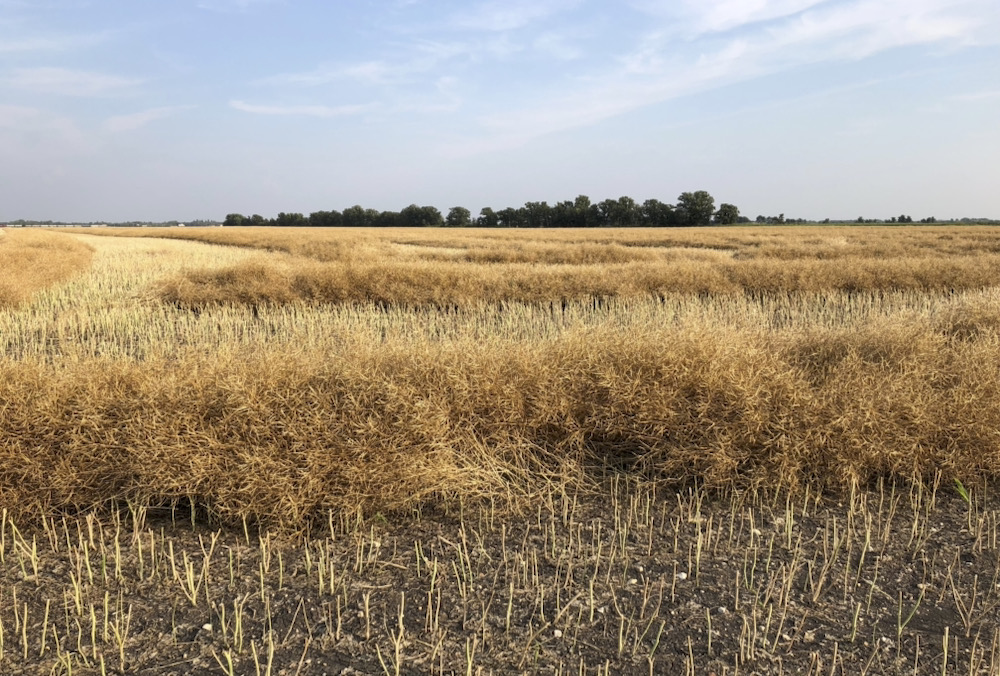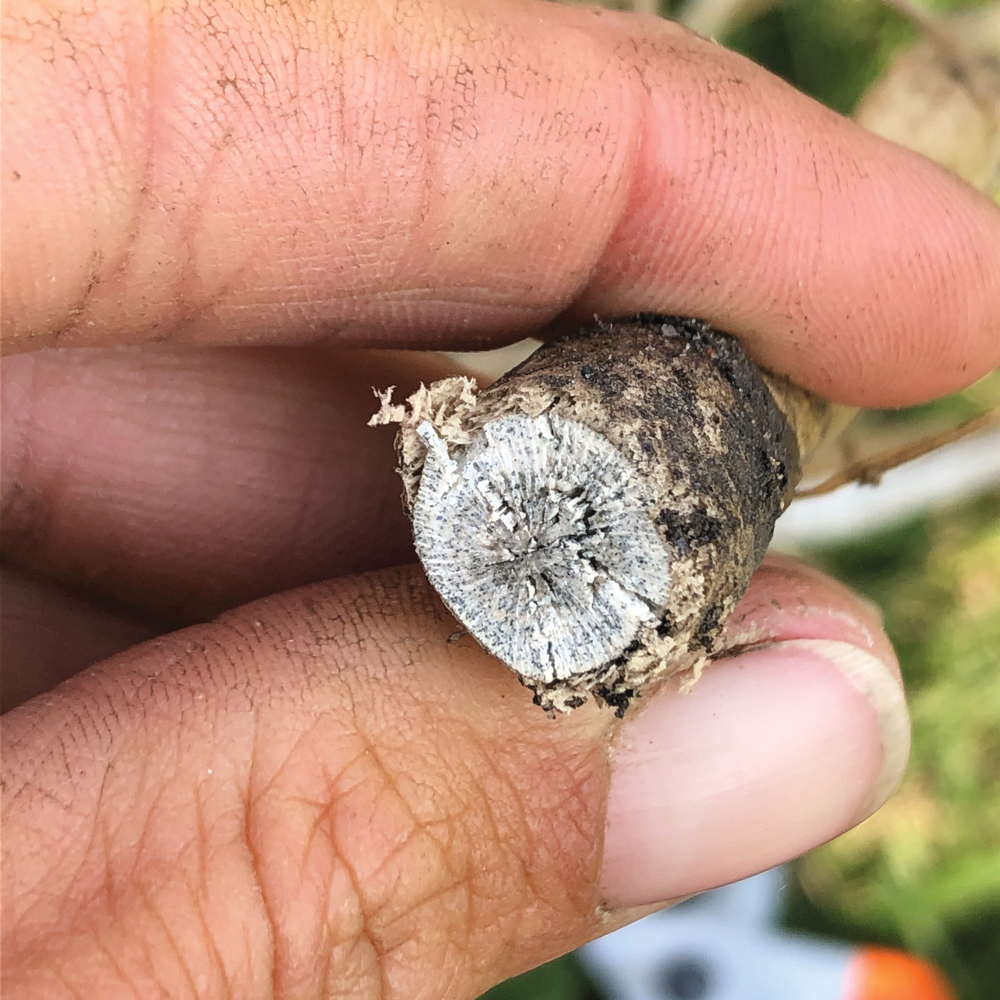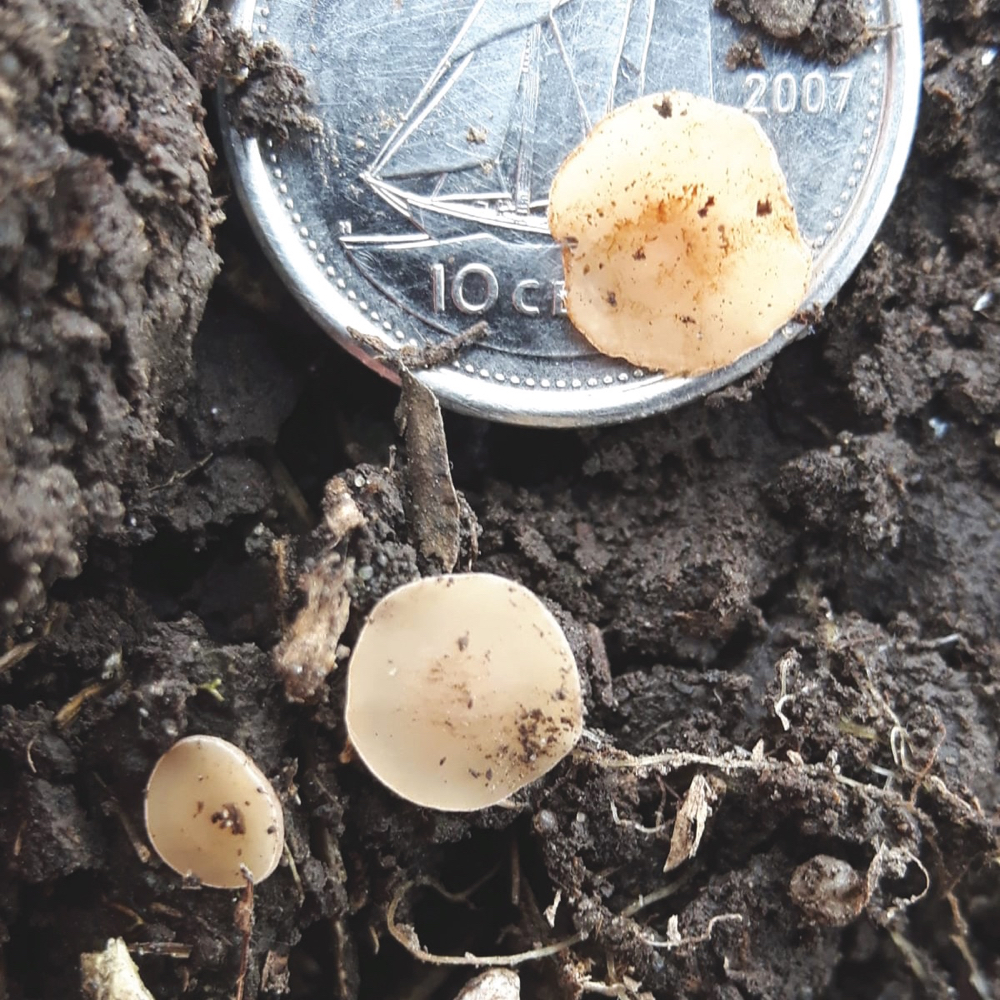Kristen Phillips knew she was putting high-risk canola in the bin. The Canola Council of Canada agronomy specialist, who farms near Brandon, Man. with her husband, Garrett, seeded a lot of crop late due to excess spring rains. And because they had to dodge potholes and seed when they could, a lot of the late-seeded canola was in three- to five-acre patches.
They swathed most of these patches at the 60 to 70 per cent seed-colour change, but given the unevenness of the crop, “it definitely had some at 30 per cent and some at 100 per cent seed-colour change,” Phillips says. Swaths cured for two weeks, and all the green seemed to be out by the time they started combining, but Phillips notes there were some green weeds and she admits they didn’t test every little canola patch.
Read Also

Are the reservoir dog days ending?
The quickest path from Regina, Sask., to Steve Nelson’s farm at Birsay is to cross Lake Diefenbaker on the Riverhurst…
“Given the conditions, we knew we needed to monitor the bins closely,” Phillips says. And they did. They checked the bin temperature cables every two days. Yet, by the end of November four bins had heating damage, and one had reached 15 per cent damage before they even noticed.
With that bin, the monitor jumped from 16 C to 28 C in two days. As soon as they saw the temperature rise, they started moving loads out of all bins to cool the grain fast. “We had no aeration bins to move to as the elevator has been unable to move any of our contracted wheat or canola, so we just kept moving it from bin to bin. We kept checking it at the elevator and tried to bin the worst stuff together, but it was hard because we didn’t have a lot of bin space. We ended up dumping piles on the cemented shed floor to try and move everything around,” she says.

By December, they were monitoring all canola daily, and moving the heated canola constantly to ensure it didn’t spoil further. They signed a contract to move the heated canola in January.
Among their four heated bins, the lowest level of damage was three per cent. Tolerances for heated seed are very low. No. 1 canola can have no more than 0.1 per cent heated seeds, and the maximums are 0.5 per cent for No. 2 and two per cent for No. 3.
The canola chapter of the Canadian Grain Commission’s Official Grain Grading Guide says “heated” refers only to seeds that are distinctly or badly “bin burnt.” Bin-burnt seeds will be black or dark chocolate brown inside. Odour is also a factor. Light-tan seeds without a heated odour are assessed as damaged, but light-tan seeds with a heated odour are assessed as heated. And light-tan seeds in combination with dark-brown or black seeds, with or without a heated odour, are assessed as heated.
Noel White, grain storage research scientist with Agriculture and Agri-Food Canada in Winnipeg, estimates it will take a temperature of 100 C or more to cause bin-burnt canola. He adds that under high-risk situations, spoilage can start within a couple of weeks of binning and once temperatures start to rise, they can reach damaging levels fairly quickly.
Any indication of rising temperatures inside the bin is a sign to act fast to turn over the bin, cool it down, and stop the process. Keep in mind that heated air dryers are recommended to run at 45 C to 65 C, so if you can stop temperatures from reaching that level, grade-reducing damage is unlikely.
Clearly, Phillips’s bins had pockets that reached temperatures much higher than 28 C — the peak shown on the monitoring cables.
Risk factor review

Canola binned hot, even if it has low moisture, low dockage and low green, should still be put on aeration. Keep the fan running until the grain has cooled to below 15 C in the fall. Check bins throughout the winter to make sure temperatures inside continue to drop as outside air cools. This is where temperature cables come in handy. They may not pick up hot spots early enough to keep damage to zero, but taking action as soon as any unexpected temperature increase occurs will prevent more serious losses.
Damp or tough canola is another obvious risk factor. The ideal moisture for safe long-term storage is eight per cent. Dockage can increase the moisture risk. Plant material, weed seeds and insect bodies tend to contain more moisture than canola seeds, and dockage often concentrates in pockets in the bin, creating localized hot spots where spoilage begins. Green canola seeds also increase the storage risk.
“The key is to check your canola bins,” says CCC agronomy specialist Angela Brackenreed. “Even top-condition canola seed continues to sweat during the first four to six weeks after harvest, and air movement inside the bin will often concentrate this moisture, creating hot spots. This is why we often see damage start to show up in November.”
Another risk factor is bin size and aeration fan capacity. Bigger bins in general will have greater compaction, and tall narrow bins have the greatest degree of compaction. Compaction reduces airflow. Aeration fans need to match bin size to make sure they have the necessary horsepower. Note that canola has greater density than cereals — another important fan power consideration.
Any bin at risk should be turned. To do this, remove at least one-third of the volume of the bin. This will only account for grain up the core, since that’s the grain that comes out first. If green counts, moisture, weeds or dockage are high (in short, anything that may increase the storage risk), transferring the whole bin may be safest. Feel and smell canola as it comes out of the bin. If canola has started to spoil, start looking for delivery options.
Storage upgrades

“Given the value of canola and the income hit from losing a bin or two to heating, growers may see a risk management benefit to upgrading their storage systems,” Brackenreed says. That could include monitoring cables, adding heated air to aeration fans or investing in a batch-drying system.
Joy Agnew, grain storage researcher with the Prairie Agriculture Machinery Institute (PAMI), has looked into the cost of temperature cable systems. “To get a rough estimate, each temperature cable is approximately $300, depending on the number of sensors, and installation costs can be up to $50 per cable. One cable reader can cost up to $1,000, but one reader can be moved to other bins,” Agnew says. An upgrade option is automatic readers on each bin that relay temperatures to a computer or phone.
A single cable is enough for small-diameter bins, and multiple cables are usually recommended for larger diameter bins. Bins that are 27 feet in diameter and up typically have at least four cables and four anchors, Agnew says. Older bins retrofitted with cables may need extra bracing, which will add to the cost.
Agnew recommends putting cables in as many bins as possible. “Since the condition of canola going into each bin will vary — sometimes slightly, sometimes significantly — the conditions during storage will be quite different, even compared to a bin right next to it,” she says.
Growers harvesting tough canola on a regular basis may want to add air heaters to their aeration fans to remove more moisture faster. “This can be relatively economical,” Brackenreed says. “You could add them to a small percentage of your bins, and when that grain is dried, transfer them to another bin to free up space for additional loads that need drying.” If this can’t keep pace with drying needs, a batch-drying system is another — albeit expensive — option.
“I’d caution against using the harvest of 2014 as a benchmark when purchasing tools for drying,” Brackenreed says. “Natural air drying typically works quite well. We just happened to have conditions this fall that did not lend well to drying.”
Check bins now
Canola that seemed fine in November and December can start to heat in January and February. It may be worth taking one-third of the canola out of higher-risk bins — even if those bins have cables.
Phillips knew their stored canola was high risk, but their cables suggested things were fine. “We realize now that if you have a hot pocket in the bin, it’s not until it gets within range of the cable that you know you are in trouble,” she says. “In years with uneven crops, lots of weeds and high-oil-content canola, you need to do your due diligence and get moving things early.”
Jay Whetter is the communications manager with the Canola Council of Canada.

